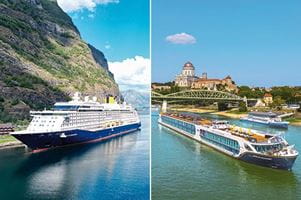Experiences
Ten archaeological wonders you can visit from a cruise
Some of the most incredible cruise experiences come from visiting destinations that transport you back thousands of years to the ancient civilisations we learned about in history books.
It’s such a thrill to step back in time and visit where mighty empires rose (and fell) as Spirit of Discovery and Spirit of Adventure sail to ports that were once gateways to the ancient world from the Mediterranean to South America.
Here’s our pick of the best.
Pompeii, Italy
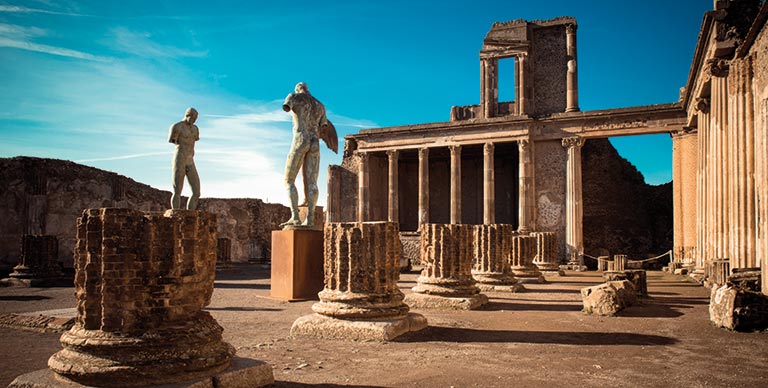
Cruise port: Salerno
Walking in the buried city of Pompeii is extraordinary, passing villas with fine mosaics, richly decorated baths and lavish dining rooms – even an ancient brothel with cubicles and erotic paintings. Your guide will share archaeologists’ methods used during the major excavation of the city in the mid-18th century but nothing prepares you for this snapshot of how the Romans lived almost 2,000 years ago before the city was choked by Mount Vesuvius in AD79.
You’ll feel like a time traveller exploring the earliest amphitheatre in existence, walking through public buildings and temples alongside streets with raised stone crossings that cleverly provided a clean path for pedestrians.
Fun fact: Cart ruts on Pompeii’s roads prove there was a one-way system around the city.
How can I experience this?
Egypt and the Eastern Mediterranean
Herculaneum
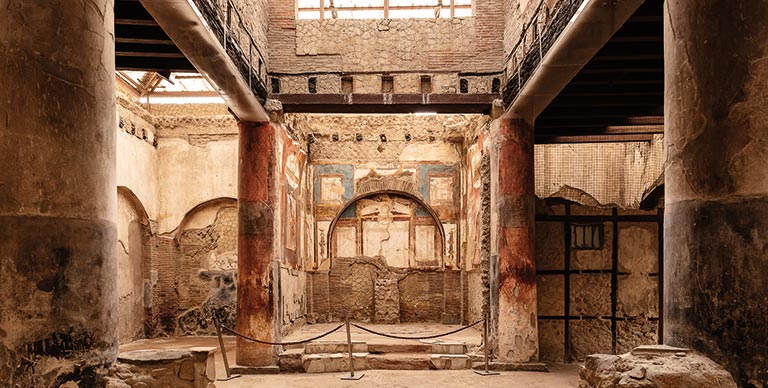
Cruise port: Salerno
Ten miles from Pompeii, the small town of Herculaneum was also destroyed in the AD79 eruption. A popular seaside retreat for the Roman elite, Herculaneum was covered in volcanic debris to a depth of 30 metres which preserved artefacts that the looser ash which fell on Pompeii could not.
The internal architecture and décor of many of the two-storey houses is remarkably preserved, including wooden stairways, balconies, a baby’s cradle and even remains of food which provides a unique insight into the daily life of the Roman population.
Fun fact: The Villa of the Papyri, one of the most luxurious houses, was owned by Julius Caesar’s father-in-law, Lucius Calpurnius Piso Caesoninus. The house’s name derives from the 18th-century discovery of 1,785 papyrus scrolls in its library that were carbonised by the eruption.
How can I experience this?
Egypt and the Eastern Mediterranean
Ephesus, Turkey
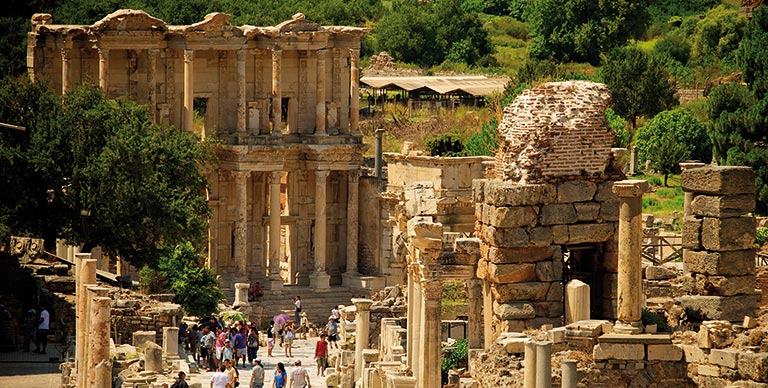
Cruise port: Kuşadası
The former fishing village Kuşadası is the gateway to the great Roman ruins at Ephesus. Originally a Greek settlement in 1000 BC, the Romans made it their capital of Asia with major port.
It is home to the Temple of Artemis, one of the Seven Wonders of the Ancient World, but only a fraction of the city has been excavated. Discoveries already indicate a sophisticated society - on the walking tour guests will see the Odeon, fountain of Trajan, steam baths of Scholastica, temple of Hadrian, and the library of Celsus.
Fun fact: Strolling through the centre of Ephesus, you’ll be walking the same streets as St Paul and St John, who both lived in the city for several years.
How can I experience this?
Egypt and the Eastern Mediterranean
Pyramids of Giza, Memphis and its Necropolis
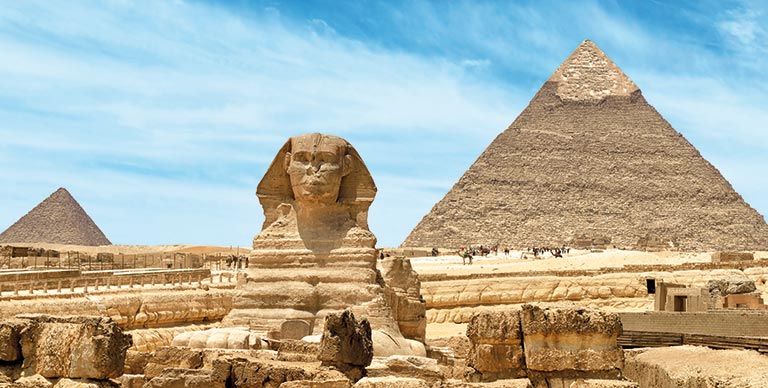
Cruise port: Alexandria
Are you old enough to remember queuing round the block to see the Treasures of Tutankhamen at the British Museum, London in 1972? London’s first museum blockbuster exhibition fired a generation’s imagination about life in ancient Egypt.
Now, an excursion from Alexandria visits the Pyramids of Giza, the last survivors of the Seven Wonders of the Ancient World. The Great Pyramid of Khufu (Pharoah Khufu’s tomb) was built around 2560 BC with more than two million limestone blocks and demonstrates the ancient Egyptians’ mastery of construction and religious beliefs surrounding the afterlife.
Fun fact: The nearby Great Sphinx of Giza is 73-metres long and 20-metres high, carved from a single piece of limestone.
How can I experience this?
Egypt and the Eastern Mediterranean
Archaeological Site of Troy, Turkey
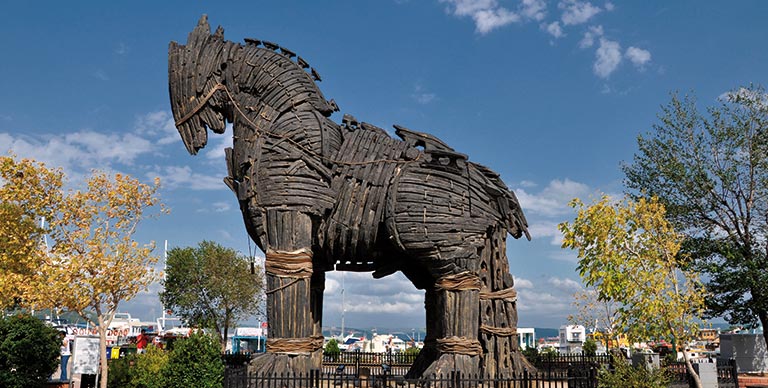
Cruise port: Canakkale, Izmir
On the Asian side of the Dardanelles, Canakkale is a gateway to the ancient ruins of Troy with a busy harbour, squares and bazaars that can be visited from your ship.
The story of the Trojan War was most famously told in Homer’s epic poem the Iliad, but the tale got a more modern retelling in the 2004 film Troy. A prop replica of the Trojan Horse, the focus of the cunning plan that ended the legendary 10-year war, stands on the waterfront here. It was gifted to the city after filming ended.
Take a shore excursion to re-live the legend of the Greeks who pretended to sail home, leaving a giant wooden horse as a gift to the gods – but the horse concealed a group of soldiers who opened the city gates for the army to attack, leading to the fall of Troy.
Fun fact: Archaeological excavations during the 20th century revealed that Troy was destroyed and rebuilt at least nine times.
How can I experience this?
Istanbul and the Eastern Mediterranean
Historic Areas of Istanbul
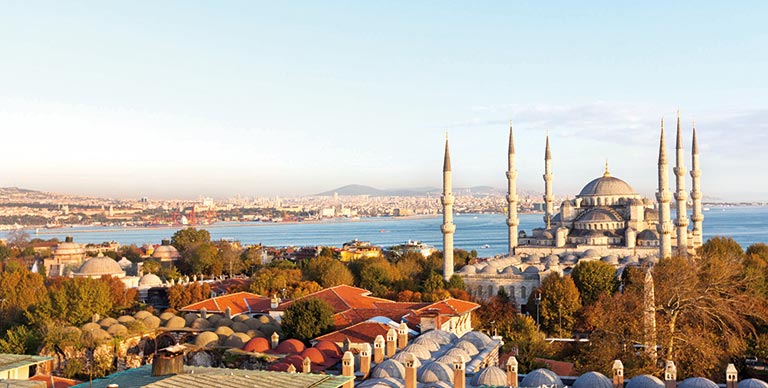
Cruise port: Istanbul
A bridge between Europe and Asia, Istanbul rises from the Bosporus Strait, where a vision of minarets and domes etch the skyline. Formerly called Constantinople, the city has a colourful history encompassing Roman, Byzantine and Ottoman rule that spans three millennia.
Key sights when visiting from your ship centre around Sultanahmet Square, which was once ancient Constantinople’s hippodrome. It is home to both the Blue Mosque, where thousands of blue tiles decorate the interior, and Hagia Sophia, a church turned mosque.
Fun fact: Author Agatha Christie wrote the novel Murder on the Orient Express at the Pera Palas Hotel in Istanbul.
How can I experience this?
Istanbul and the Eastern Mediterranean
Acropolis, Athens, Greece
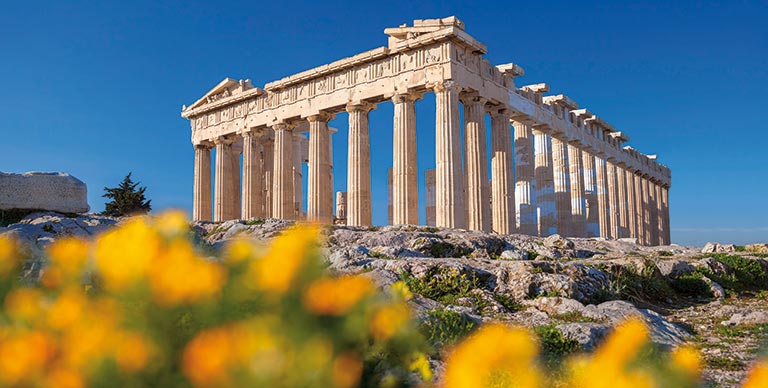
Cruise port: Piraeus
Ancient Athens was the birthplace of democracy as well as a cauldron of creativity, leading to great advances in philosophy, art, literature and architecture.
From your ship take a city tour that includes a visit to the UNESCO-listed 5BC Acropolis complex where the monumental Parthenon and temple of Athena Nike overlook the city, and the Acropolis Museum, considered one of the best museums in the world.
Fun fact: Recently, scaffolding on the Parthenon was removed for the first time in 200 years. Lighter scaffolding will go back up in winter 2025 – for final restoration work on the western side – but it is expected to be permanently removed by summer 2026.
How can I experience this?
Istanbul and the Eastern Mediterranean
The Megalithic Temples of Malta (Haġar Qim, Tarxien)
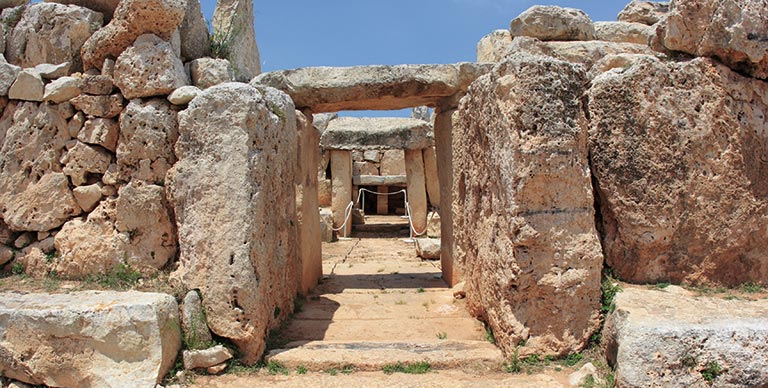
Cruise port: Valletta
The original purpose of the mysterious megalithic Haġar Qim temples has been the subject of much debate over the centuries. The late-Neolithic site, on the southern edge of Malta, dates back more than 5,000 years and is considered one of the most ancient sacred sites on Earth.
During an excursion, stop at the visitors’ centre which explains how these magnificent temples were built with giant stones and slabs weighing up to 20 tons.
Fun fact: Haġar Qim is now protected from the elements by shelters that were built in 2008 to slow down the damaging impact of the elements.
How can I experience this?
Ring of Brodgar and Stones of Stennes (Heart of Neolithic Orkney)
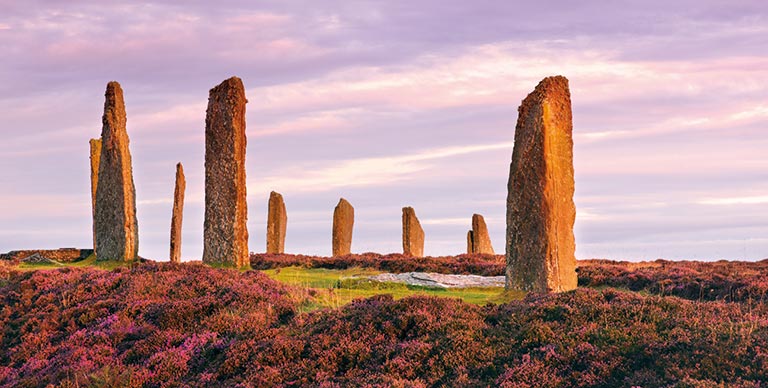
Cruise port: Kirkwall
In 1882, the Ring of Brodgar, on the Orkney Islands, was one of the first places to be protected as a site of historical significance in the British Isles.
There’s little evidence as to why the Neolithic inhabitants created the site but walking around the 2500-2000BC circular ring of 27 remaining standing stones highlights a natural amphitheatre surrounded by hills and lochs.
In summer, to appreciate the wildflowers – ling, clover, grasses and meadowsweet – that carpet the site step away from the main path and follow routes that take you on a wider circumnavigation of the stones.
Another ceremonial stone circle, the Stones of Stennes offer wonderful views to the hills of Hoy, in the north of Orkney. Originally part of a ring of 12 tall stones, they were placed between 3000BC and 2500BC, so pre-date the Ring of Brodgar.
The stones have not always fared well and today consist of just four upright stones. On Christmas Day 1814, a farmer lost patience with visitors wandering across his land to see the stones so he destroyed the Stone of Odin. Fortunately, the Stones of Stenness passed into the care of the state in 1906.
Fun fact: The toppled Stone of Odin had a circular hole through which local lovers plighted their troth by holding hands.
How can I experience this?
Chan Chan Archaeological Zone, northern Peru
Cruise port: Trujillo
The Chimu Kingdom, with Chan Chan as its capital, is thought to have reached its peak in the 15th century before falling to the Incas.
On a tour, learn about the planning of this huge city, the largest in pre-Columbian America, which reflects a strict political and social strategy.
This spectacularly beautiful UNESCO site with mud wall architecture, art and carvings is sub-divided into nine palaces plus the remnants of industrial, agricultural and water systems.
Fun fact: Bringing things up to the 21st century, Trujillo’s sand dunes are now popular for sandboarding – surfing on sand ‘waves’!
How can I experience this?
A Grand Voyage to South America
The opinions expressed are those of the author and are not held by Saga unless specifically stated.
The material is for general information only and does not constitute investment, tax, legal, medical or other form of advice. You should not rely on this information to make (or refrain from making) any decisions. Always obtain independent, professional advice for your own particular situation.

